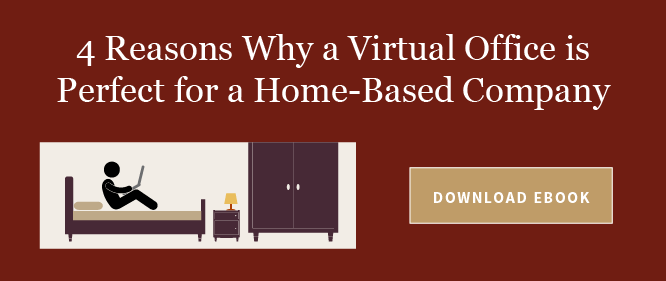Virtual office is defined by dictionary.cambridge.org as: “the activities of a business carried out by people who communicate by telephone, email, and the internet, etc., rather than working together in a building”.
A Virtual Office (VO), in its simplest form, is an arrangement for a business to have a professional address at a physical brick-and-mortar location. Work can be done from home, a coffee shop, or from a cruise ship, but the business address is at the physical location of the VO provider.
Additional services can be included in a VO agreement such as professional phone answering. This can make all the difference in the professional image of a business. Business calls are answered professionally every time by a live receptionist.
According to research by Vodafone, 93% of businesses without live professional answering miss calls because 72% of callers won’t leave a voice mail. The same research
indicates that UK business alone loses over 31 billion dollars a year because they fail to answer client calls.
Why Get a Virtual Office?
The number one reason for getting a VO is to separate home from business and have a professional presence. The opportunity to work from home is one of the most liberating developments of the Internet. Use of a VO ensures that the freedom to work at home doesn’t come at the cost of privacy or convenience.
A second major reason for the use of a VO is to tap into new markets. Example: A New York based business may want a presence in the San Francisco Bay Area. With a VO based in the San Francisco Bay Area, the New York business may advertise the San Francisco Bay Area address on its website, business cards, and letterhead.
A Virtual Office helps today’s worker to reap the many benefits of working
from home:
- No additional overhead to rent, furnish and equip a separate office structure
- No commute costs
- No additional childcare costs
- Flexibility. A home office can be a room designated for the sole use of the business, or a garage conversion, or a laptop and smart phone arranged in a corner of the kitchen.
How Do Virtual Offices Work?
A business owner enters a written agreement with a VO provider
for specific services. The services may include mail, phone, office and
conference room use for monthly fees.
Mail handling – Professional address
The business owner completes a written agreement and then notifies business contacts of the new business address. The VO provider will receive the mail for this business and then handle that mail in a highly customized manner such as:
a. For a local business the mail can be placed in a private, locked
mailbox. The client can come and retrieve mail from the mailbox
b. The mail can be forwarded to the business owner’s address
c. The business can request to be called or emailed when they have mail.
Complete Call Handling
The business owner may want to establish a new phone number for his
business or have his current business number redirected to the VO
a. Professionally trained receptionists answer all calls for the business as the business desires
b. The receptionist transfers the calls according to the business owner’s preference which could be to the business owner’s land line, a cell
phone, or a voicemail.
Use of an office or conference room
A VO may include a set number of hours per month for the client to use a conference room or private office at the VO provider’s location. Typically the client may email or call in to request a reservation.
For many professionals today, the freedom to not have a full time office is a great blessing. VO packages allow these professionals to select only the elements that enhance their business model while working from home, or on the road.


